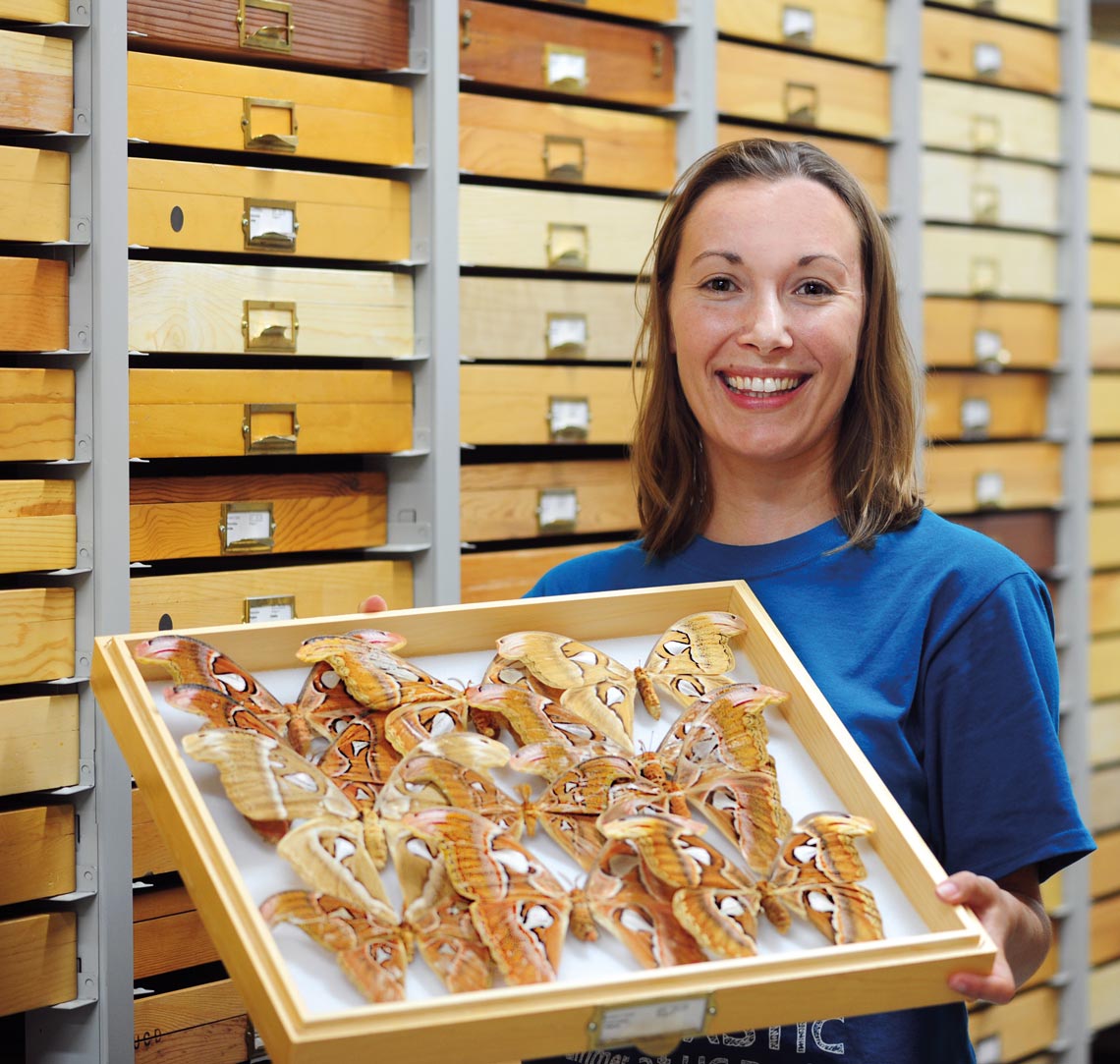
Personal archive
Gillung with a collection of moths from southeast Asia, belonging to the Bohart Museum of Entomology in California, USAPersonal archiveResearch conducted in the field of entomology—a branch of biology that studies insects and their relationships with other living things—shows that interactions between flies and spiders are more complex than most people realize. “Predator and prey are switched when it comes to parasitoid flies,” says biologist Jéssica Paula Gillung, a specialist in morphology and DNA analysis who has been studying insects in the USA since 2013.
Born in Palmeira, in the state of Paraná, the 32-year-old scientist was presented with the Marsh Award for Early Career Entomologist by the Royal Entomological Society of London, UK. The prize, awarded in August, recognizes outstanding scientists in the field. Gillung has already won two other awards from the Entomological Society of America.
She first took an interest in the field in 2005, after conducting undergraduate research in the area as part of a biological sciences degree of the Federal University of Paraná (UFPR) in Curitiba. “That’s when I first learned about the flies of the Acroceridae family, which are natural enemies of spiders and can be found in the wild worldwide,” explains Gillung.
The relationship between these parasitoid flies and spiders begins during their larval phase. “The insect lives on the spider and feeds on it as it develops, eventually consuming all of the spider’s internal tissue,” she explains. During her master’s degree at the Institute of Biosciences of the University of São Paulo (IB-USP), which she completed in 2011, Gillung studied the Philopota Wiedemann fly, a genus found in the neotropical region of South America and the south of Mexico. The research, which identified 13 new species of parasitoid flies, involved sampling and analyzing entomological collections from several countries in the region.
For her PhD, completed last year at the University of California, Davis, in the USA, she classified the types of parasitoid flies that are associated with different types of spider and investigated how they develop based on morphological, molecular, and fossil analyses.
The experience she gained in the lab allowed her to later study bees. As part of her postdoctoral research at Cornell University in Ithaca, New York, Gillung is investigating the effect of fungicides on wild bee larvae, which the females deposit in small holes in the ground and hollow tree branches. “There is evidence that fungicides are as harmful as other pesticides,” she warns. The eggs are laid in a small mass of pollen and nectar, which the larvae then feed on after hatching, the researcher explains. Like a loaf of bread, the material has to ferment before it is edible. “The objective is to describe in detail the way fungicides affect the health and development of the larvae,” she says.
Project
Taxonomic review and cladistic analysis of Philopota Wiedemann, 1830 (Diptera, Acroceridae) (nº 09/03932-6); Grant Mechanism Master’s degree; Principal Investigator Silvio Shigueo Nihei (USP); Investment R$37,386.03.
